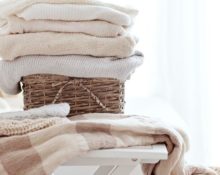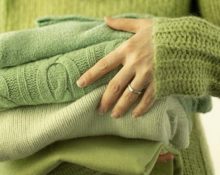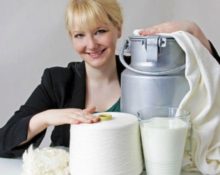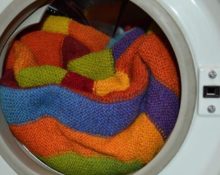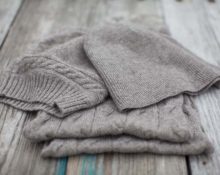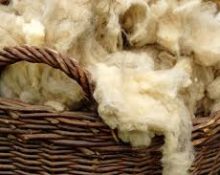The extraction and production of wool is one of the most ancient types of fiber work imaginable. The development of technologies and methods for producing woolen fabric goes back many centuries. Nowadays, wool dressing consists of a large number of complex stages, some of which are completely manual, and some are automated. In any case, wool production technologies do not stand still and are constantly evolving.
Wool production technology
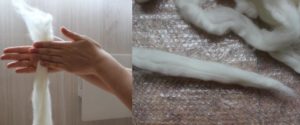 The production of wool and products from it is a set of interrelated actions, as well as methods for obtaining products. It is a mistaken opinion that the technology includes only the direct methods of making yarn or fabric sheets, from which things are subsequently sewn or knitted. In fact, the technology includes the entire production stage from raising an animal, feeding and caring for it, breeding, as well as the collection of wool itself and further direct processing of the material.
The production of wool and products from it is a set of interrelated actions, as well as methods for obtaining products. It is a mistaken opinion that the technology includes only the direct methods of making yarn or fabric sheets, from which things are subsequently sewn or knitted. In fact, the technology includes the entire production stage from raising an animal, feeding and caring for it, breeding, as well as the collection of wool itself and further direct processing of the material.
The production chain of woolen garments
So, the entire process of making a wool product includes seven interconnected stages. If you skip any of them, the chain will be broken, which means that the quality of the threads and products as a whole will suffer.
Raising Animals
The primary and fundamental stage is the breeding and raising of animals. Wool is the hair covering of a number of mammals. She consists of thick, guard hairs, which determine the length and shape of the entire coat, as well as thin, fluffy and curly hairs (they form the undercoat). Wool is collected from many species of mammals, including sheep, goats, camels, alpacas and llamas, and rabbits. The process of raising animals includes the following important components:
 content. The form of content depends on the type of production. This can be either a small private farm or huge farms;
content. The form of content depends on the type of production. This can be either a small private farm or huge farms;- breeding. Typically, on farms and farms, fairly large herds are formed in which animals are raised both for shearing wool and for other agricultural needs, for example, meat or dairy production;
- feeding. It occurs depending on the lifestyle of the animals. They can live all year round in stalls, or using a pasture system and natural feeding (when animals consume food in meadows or other special areas);
- care. Animals are examined by veterinarians to ensure the quality of their fur; they consume only high-quality food and other healthy supplements.
Harvesting
Mammal fur is collected in two different ways:
- a haircut;
- by combing (it is used, for example, when collecting the fur of an Angora rabbit).
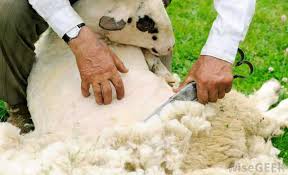 Of course, the first method is the most common and convenient for both humans and animals. Hair shearing occurs at certain times of the year. For example, Sheep must be sheared in the spring, but some breeds also need additional, autumn shearing. Young animals born in winter are usually cut a little later - in June or July, when the hair grows longer.
Of course, the first method is the most common and convenient for both humans and animals. Hair shearing occurs at certain times of the year. For example, Sheep must be sheared in the spring, but some breeds also need additional, autumn shearing. Young animals born in winter are usually cut a little later - in June or July, when the hair grows longer.
The haircut is performed by specially trained people so as not to injure the animal. For this, well-sharpened and fairly large scissors are used. In modern conditions, haircuts are often carried out using a special clipper.
Important! A trained specialist performs his work professionally. He can shear about 200 heads of sheep per day. Interestingly, one sheep produces about 7 kg of wool, and a large ram produces about 9 kg.
Sorting
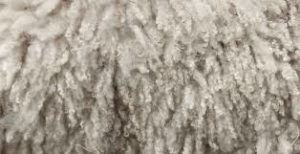 The harvested crop is subject to mandatory sorting. The main criteria are length and fineness (essentially the thickness of the hair). The length of the coat depends on the type of animal: in some breeds it can vary significantly. For example, the Merino breed has a hair length of approximately 7–12 cm, and in coarse-haired representatives the length reaches even 30–40 cm. It becomes clear why they must be cut and how difficult it is for them to carry such a burden.
The harvested crop is subject to mandatory sorting. The main criteria are length and fineness (essentially the thickness of the hair). The length of the coat depends on the type of animal: in some breeds it can vary significantly. For example, the Merino breed has a hair length of approximately 7–12 cm, and in coarse-haired representatives the length reaches even 30–40 cm. It becomes clear why they must be cut and how difficult it is for them to carry such a burden.
The wool sheared from one sheep is called fleece. The fur of even one individual is quite heterogeneous in composition. The cover has different textures on different parts of the body. The best hair grows on the sides, back and shoulder area.Those hairs that grow on the legs are usually not of very good quality. That is why it is subject to mandatory sorting both by length and fineness, and by its crimp.. Materials of different coarseness are subsequently used to make different fabrics. Coarse wool is usually used to make felt and building materials, while softer wool is used to make personal items, clothing and interior items.
Purification of raw materials
Only wool cut from an animal is called raw, that is, material that has not yet been subjected to any processing or cleaning. Outwardly, it looks like something very shaggy and a little sloppy. But all this can be fixed. For the subsequent creation of yarn, this stage is mandatory. It consists of:
- washing wool. This is done at a temperature of about 40–50 degrees Celsius. On an industrial scale, washing is carried out using special equipment that performs all stages, including thorough washing and squeezing of the material;
- garbage collection. Raw materials often contain various particles that are completely unnecessary to create high-quality yarn. These can be thorns, dry grass that gets stuck in the wool when sheep graze in the fields. In some modern farms, sheep are protected from dirt getting into their wool. For example, they can be covered with special mesh capes during grazing.
Combing
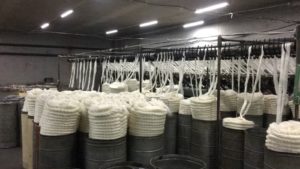 After cleaning the raw material, the combing stage begins, so that the wool turns from a tortuous and shaggy substance into fairly even strands. Previously, this entire process was done manually. Now, in the age of new technologies, carding machines do all the main work. These devices are equipped with special rollers that can pass wool through them.They are covered with wire bristles, thanks to which all tangled hairs are straightened, forming even, separated fibers.
After cleaning the raw material, the combing stage begins, so that the wool turns from a tortuous and shaggy substance into fairly even strands. Previously, this entire process was done manually. Now, in the age of new technologies, carding machines do all the main work. These devices are equipped with special rollers that can pass wool through them.They are covered with wire bristles, thanks to which all tangled hairs are straightened, forming even, separated fibers.
Important! Some machines simultaneously perform not only combing, but also cleaning of the material. This saves a lot of time for the manufacturer because the 2 steps are combined into one.
The resulting cardboard fibers are carefully twisted into strands called rovings. This completes all the preliminary steps before actually spinning the yarn.
Spinning
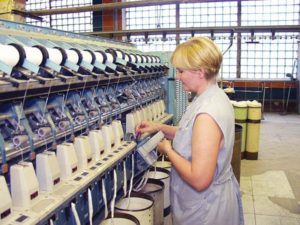 In earlier times, spinning was the main occupation of unmarried girls. We all remember the spinning loom from the fairy tale “Sleeping Beauty”. It was on such a tool that women made yarn with their own hands. Now the whole process has been significantly mechanized and simplified. A loom in a factory creates wool threads hundreds of times faster than a hundred craftswomen would do it by hand.
In earlier times, spinning was the main occupation of unmarried girls. We all remember the spinning loom from the fairy tale “Sleeping Beauty”. It was on such a tool that women made yarn with their own hands. Now the whole process has been significantly mechanized and simplified. A loom in a factory creates wool threads hundreds of times faster than a hundred craftswomen would do it by hand.
Sometimes wool is also run through a blending machine before spinning.. This is done when the material is made with a partial wool content. This is where wool is mixed with synthetic fibers such as acrylic.
The spinning process itself is called knotting. To make it easier to understand its essence, you can consider it using the example of hand spinning. To do this you need:
- separate a small piece of material and stretch it;
- felt a little;
- then use twisting movements to form a thread. So that it does not break off and is long, it is important to simply add more and more new pieces of wool.
On factory equipment, this process takes place in exactly the same way, but by the hands of a machine, not a person. The master only needs to check the correctness of the work, as well as lay the raw materials on time.
Making fabric or yarn
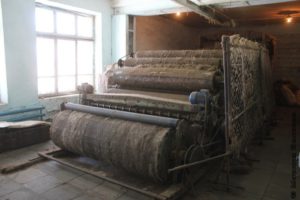 From the resulting woolen threads, two types of material can be obtained: either yarn for knitting or fabric. The latter are made on a loom. The higher the quality of the wool and the better the cleaning and processing it has undergone, the higher the quality of the finished fabric.. At this stage, they can be produced as completely natural fabrics (for example, containing only cotton and wool). Most modern fabrics are made using synthetic threads. There is nothing wrong with this, because all-woolen fabric also has some disadvantages, in particular, it itches quite a lot.
From the resulting woolen threads, two types of material can be obtained: either yarn for knitting or fabric. The latter are made on a loom. The higher the quality of the wool and the better the cleaning and processing it has undergone, the higher the quality of the finished fabric.. At this stage, they can be produced as completely natural fabrics (for example, containing only cotton and wool). Most modern fabrics are made using synthetic threads. There is nothing wrong with this, because all-woolen fabric also has some disadvantages, in particular, it itches quite a lot.
If wool is used to make yarn, then the threads can be left either of a derivative thickness, or folded several times and get thick yarn.
Sewing or knitting
The last stage is the direct production of woolen items. The manufacturing method will depend on the finished material:
 A wide variety of products are made from woolen fabric. This can be either a business suit or a casual jumper. I sew outerwear from thick fabrics, for example, a cashmere coat. Household items, such as a blanket for a sofa or a warm blanket, are also made from solid linen;
A wide variety of products are made from woolen fabric. This can be either a business suit or a casual jumper. I sew outerwear from thick fabrics, for example, a cashmere coat. Household items, such as a blanket for a sofa or a warm blanket, are also made from solid linen;- A huge number of warm and cozy products are made from yarn. Grandmothers knit socks and mittens for their grandchildren. In stores you can also find hand-knitted items, for example, a patterned sweater or a beautiful hat and scarf set.
Important! The last stage of wool production can be completely different. For this purpose even spinning is skipped. We're talking about felting - the same method of making warm felt boots, house slippers, and hats for the bath.This method involves keeping cleaned wool in almost boiling water, due to which it becomes coarser and stops being so fluffy. This material makes excellent boots or children's toys that will delight you for a long time.


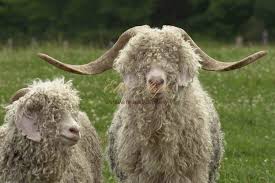 content. The form of content depends on the type of production. This can be either a small private farm or huge farms;
content. The form of content depends on the type of production. This can be either a small private farm or huge farms;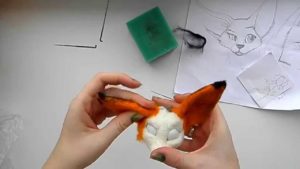 A wide variety of products are made from woolen fabric. This can be either a business suit or a casual jumper. I sew outerwear from thick fabrics, for example, a cashmere coat. Household items, such as a blanket for a sofa or a warm blanket, are also made from solid linen;
A wide variety of products are made from woolen fabric. This can be either a business suit or a casual jumper. I sew outerwear from thick fabrics, for example, a cashmere coat. Household items, such as a blanket for a sofa or a warm blanket, are also made from solid linen; 0
0